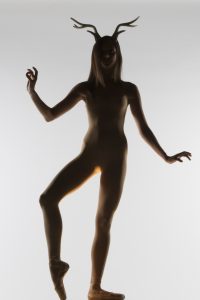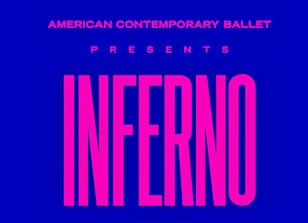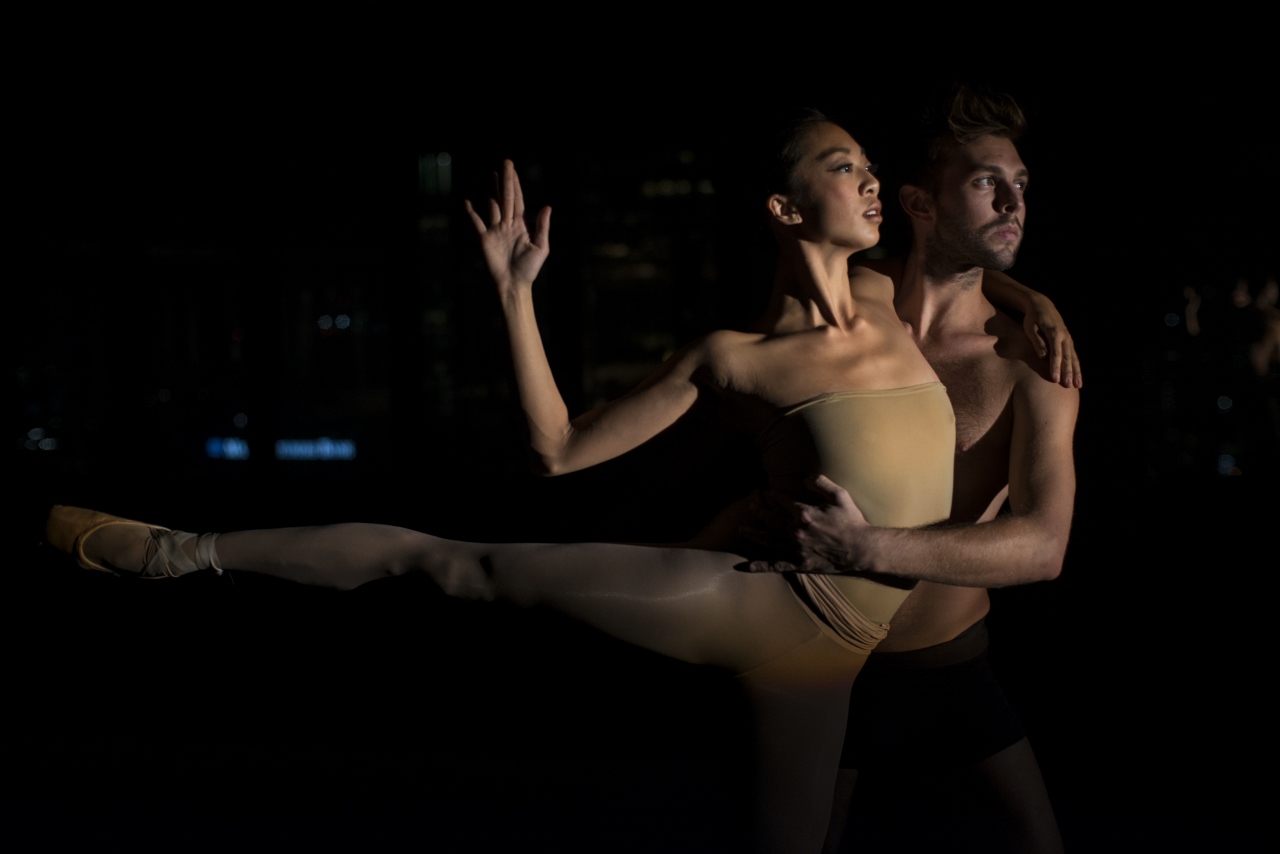ACB’S JOURNEY INTO HELL:
THE ONE TIME YOU MIGHT WISH
THE TRIP WERE LONGER
Inferno, American Contemporary Ballet (ACB)’s season opener was a musical blast from the past with a twist. Just in time for Halloween, Artistic Director Lincoln Jones’ latest ballet—set to music from Charles Wuorinen’s seven-part opus The Mission of Virgil—was one for the Dante darlings. Based on Alighieri’s version of hell from his epic poem Divine Comedy, the show’s atmosphere was creepy and ominous in a way that came together well thanks to creative combinations of choreography and technical elements, but was too short.
Inferno debuted on Friday the 13th on the spooky and dark 32nd floor of the BLOC building downtown. Opening night was celebrated in style with black-and-red cocktail attire and themed drinks. However, an eerie silence greeted those who went on any other night.
Each section of the ballet was very brief, with the work jumping from persecution, limbo and the first sinners’ circle almost directly to the ninth. Although individual scenes were enthralling to watch, the piece felt like a sampler of hell rather than a journey as some of the most compelling representations of Dante’s Inferno being briefly introduced through short bouts of movement. These were mostly interpreted through what has become ACB’s favorite and perhaps best form of storytelling—expressive hand and arm gestures, which rotated in circles to create familiar patterns. Pointed fingers by the Poet (Amy Helfrich), Warrior (Angela Ridolfi), and Philosopher (Theresa Farrell) were used to illustrate truth and drooping middle and ring fingers by the Monsters of the Prime (Geryon, played by Helfrich; Antaeus, played by Ridolfi; and Nimrod played by Farrell) appeared to be mocking the symbol of Christ.
 The iconography was so well-executed, it felt as if the creatures could have been further developed. Similarly Stefan Weinberger’s lighting, which added subtle details that helped create a necessary sense of discomfort. Effects included a strip of blueish backlighting for shrouding Satan (Cierra Flood) with a hue of icy coldness, and illumination from the side to emphasize the panoramic view of the dance space.
The iconography was so well-executed, it felt as if the creatures could have been further developed. Similarly Stefan Weinberger’s lighting, which added subtle details that helped create a necessary sense of discomfort. Effects included a strip of blueish backlighting for shrouding Satan (Cierra Flood) with a hue of icy coldness, and illumination from the side to emphasize the panoramic view of the dance space.
Watching the devil open and close it’s long, razor-like fingers was an eerie delight, as were Ruoxuan Li’s costumes varying between sheer and slightly revealing nudes for the main characters and daring black leather for the monsters. The nudity warning advertised beforehand was nothing more than a quick flash from Sarah Foley as she emerged topless from an aisle and clung onto Ian Schwaner’s back. Barely seen in the reflective windows serving as the production’s backdrop, her exposure was humble and did not distract.
In terms of description and elaboration, the program’s featured quotes spoke more to those familiar with Dante’s work, but did not provide much of an explanation of the characters. Alin Melik-Adamyan, Somang Jeagal and Noami Sumatini’s piano bangs and clangs contributed to their sometimes violent turns and grabs. The rhythm was jolting and strange, but went well with the dancing, which elevated the melody into having more meaning. Although the composition was pre-written, it  was only through later investigation or prior knowledge of Wuorinen’s work that one might know the music didn’t allow for more. It still felt short.
was only through later investigation or prior knowledge of Wuorinen’s work that one might know the music didn’t allow for more. It still felt short.
Rochelle Chang as Dante had very good chemistry with Schwaner’s Virgil. Their choreography was dramatic and reflective of Dante’s dependence on his guide through hell. Paolo (Schwaner) and Francesca (Elise Filo)’s story from the Circle of Lust served as a foil for their portrayed love with a more balanced, but miserable power dynamic. In both cases, the couples’ heteronormative relationship was not what was indicative of their dynamic. Rather their difference in strength and confidence, which saw Dante often falling or dipping backward, was the surest sign of his frailty, while Paolo and Francesco’s petite entwined rotations en pointe symbolizing their whirlwind romance. As a direct contrast, Virgil and Dante’s embracing, slow march toward a peeking spotlight in the final scene was the most emotional moment. Their transition out of hell and toward hope and life was a fantastic passage into ACB’s new season.
photos by Art Lessman
Inferno
American Contemporary Ballet
The BLOC building, 700 S. Flower St., 32nd Floor
ends on October 28, 2017
for more info and tickets, visit ACB Dances


